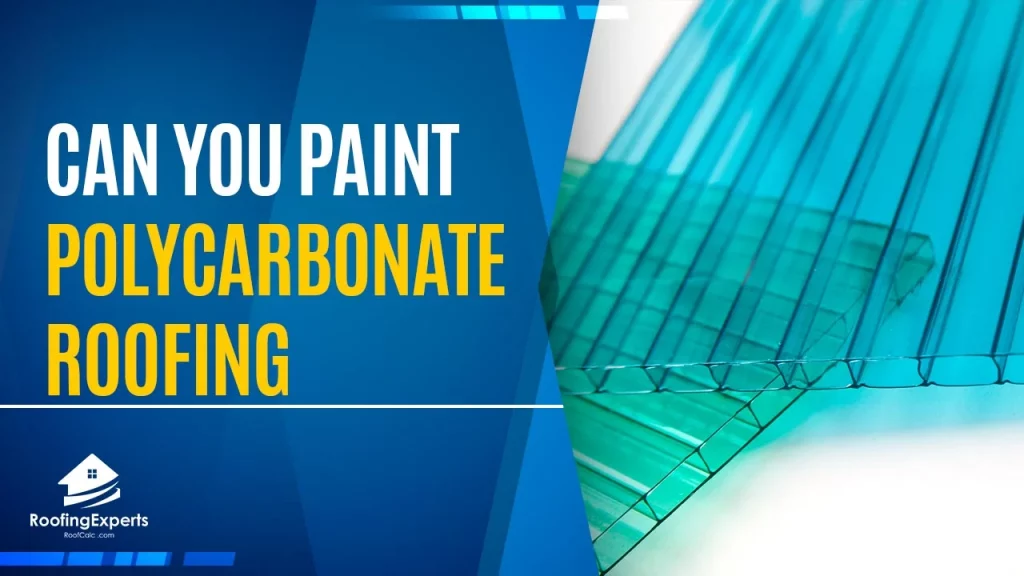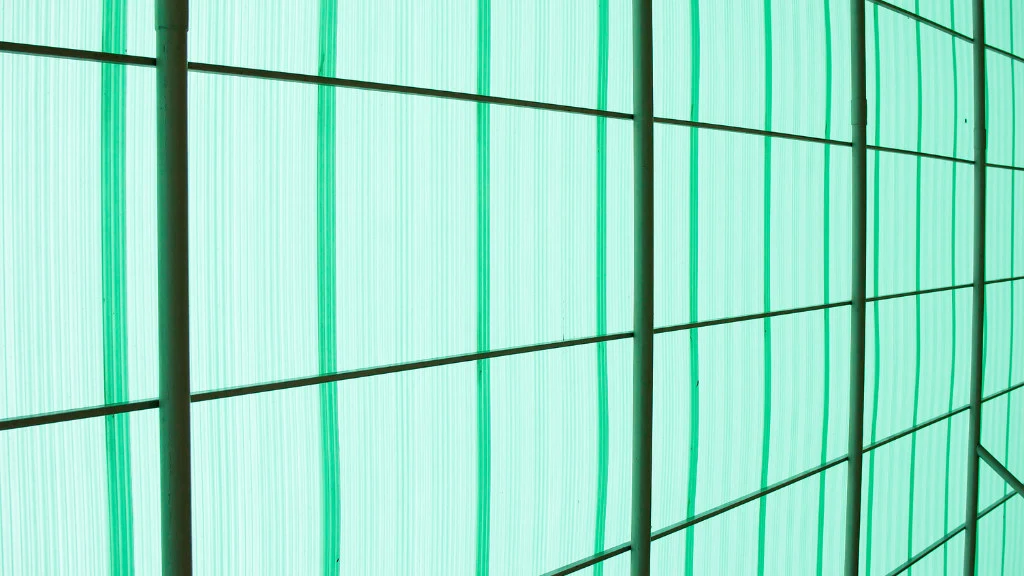
If you are looking to paint your polycarbonate roofing, you will find that it can be done. The process is not as difficult as you might think and the results are fantastic!
In this article, we will talk about what products you need to use and how they work. We will also discuss some of the pros and cons of painting your polycarbonate roofing so that you know exactly what to expect before starting on this project.
What is a Polycarbonate Roofing
Polycarbonate roofing is made of polycarbonate – a clear thermoplastic material (a material that softens when exposed to heat).
Polycarbonates are known for their ability to withstand high impact strengths while remaining relatively light in weight.
They are used primarily in the manufacture of safety-related products, such as bicycle and motorcycle helmets, bullet-resistant windows and skylights for jet aircraft.
Thermoplastic and thermosetting materials are both types of polymeric material.
1. Thermoplastic – a material that can flow when heated and then harden again with cooling.
2. Thermosetting – a material whose properties remain the same even after exposure to heat or pressure, and which will not soften any more once it has been shaped into its final form.
When most people think of polycarbonate roofing, they imagine what it looks like.
However, it is actually a very versatile material that can be shaped into various different forms and structures such as windows, skylights and even partitions that divide rooms.
What You Will Need to Paint Your Polycarbonate Roofing
Painting your polycarbonate roofing may seem like an easy enough task, but you will need the right products to do it. The products you will need are:
- A primer – a paint that adheres to plastic, assists in creating smooth finishes and offers superior weather protection.
- It also prolongs the lifetime of your roofing because it prevents sun damage.
- A paint – you can use either an acrylic or an enamel.
Ideally, you should buy a kit that includes both the primer and the paint so that they are designed to work together for maximum results.
Pro Tips on Painting Your Polycarbonate Roofing
Tip 1: If possible, try to avoid painting your polycarbonate roofing when the temperature is too hot.
This will make it easier to apply your paint and you will have a better chance of achieving professional results.
Tip 2: Also, try not to touch the surface until it has completely dried because this can disrupt the bond between your primer and polycarbonate roofing.
Tip 3: And never start painting if the surface is wet. Make sure you clean and dry the surface first.
Properties of a Good Polycarbonate Roofing
Some of the properties that make a good polycarbonate roofing are:
- Lightweight – Polycarbonate is about 40% lighter than glass, making it more feasible to handle.
- It also provides greater insulation against summer heat and winter cold.
- High impact strength – Polycarbonates are capable of bearing heavy loads without shattering, stretching or tearing.
- They can withstand both lateral and vertical pressures with ease.
- Heat resistance – Polycarbonate roofing is highly resistant to fire but will melt if exposed to extreme temperatures.
- UV resistance – Ultraviolet radiation from the sun can be very harmful to polycarbonate, weakening its structure and causing it to discolor.
- However, this is not an issue with polycarbonate roofing because the material offers adequate weather protection against ultraviolet rays.
- Resistance to chemicals – Polycarbonates are resistant to alkalis, acids and most other chemicals.
- However, they are not resistant to solvents such as gasoline or kerosene, which can cause rapid deterioration of the material.
- Environmental concerns – Polycarbonate roofing is a good choice for green buildings because it is made from a naturally occurring material: carbon dioxide.
- Also, polycarbonates can be recycled after use.
Uses of Polycarbonate Roofing
Some common uses of polycarbonates in roofing are:
- Roof windows – These can let natural light into a room while ensuring privacy and security.
- The three common types of roof windows are the barrel vault, the box and gable and clerestory windows.
- Skylights – These are suitable for homes that have high vaulted ceilings.
- They can let in natural light without compromising security or privacy, but the installation process is more complicated compared to other kinds of skylights.
- Curved roofing – Polycarbonate offers strength and rigidity even when used in curves.
- Curved polycarbonate roofing can be ideal for larger homes because of the broad expanses of glass it would need.
Drawbacks of Polycarbonate Roofing
Some minor drawbacks of using polycarbonates as roofing materials are:
- Price – Polycarbonates are relatively expensive compared to other kinds of roofing materials.
- Flammability – Polycarbonates can melt if exposed to high temperatures for too long.
- Low resistance to weathering – While polycarbonate roofing is highly resistant against chemicals, it is easily destroyed by the elements such as rain and temperature fluctuations.
- An occasional coat of sealant will protect the material from water damage and weathering.
Polycarbonate roofing is a good choice for green buildings because it is made from a naturally occurring material: carbon dioxide.
It offers high impact strength, resistance to chemicals and ultraviolet radiation, and is lightweight. However, polycarbonates have a higher price compared to other kinds of roofing materials.
Polycarbonate roofs have many advantages and some disadvantages. A polycarbonate roof can last for 50-100 years. Finally, they are known for their ability to withstand high impact strengths while remaining relatively light in weight.


